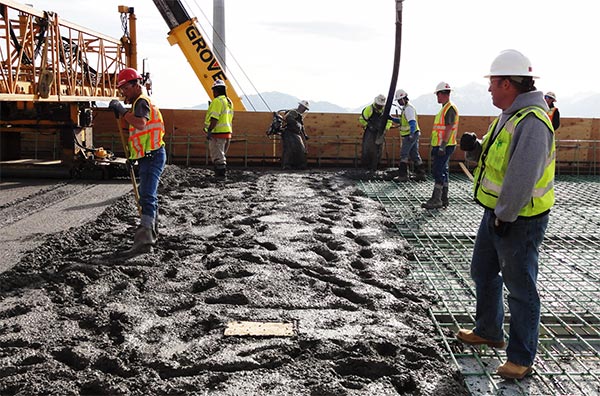Usually, the contractor should take responsibility with all essential steps to track and resist cracking in fresh hydrating concrete, devoid of the size or volume of the pour. The steps should be approved by the Engineer and ensure that extreme surface crack width on hardened concrete measure instantly after the pour does not surpass 0.004 times the nominal cover of the primary reinforcement.
The contractor will be responsible for and offer sanctioned instrumentation for measuring the variation of internal temperature in large pours. The extreme concrete temperature at the point of delivery usually shall not surpass the lower of either 37 degree C, or 6 degree C beyond the existing shade temperature compliant with the approvals of ACI. The limiting internal temperature differential measured over the maximum faces of concrete mass shall not go above 25 degrees C at any time.
Curing of hardened concrete will be done according to the curing specification. Usually, the element surface is not chilled to disperse heat from the concrete. Curing methods, like the drenching of heated concrete elements uncovered to long and direct radiation, which produce temperature gradients inside the concrete mass, are not recommended for application.
For big pours, the contractor will be liable for and take additional provisions to lessen concrete temperature gradient as well as check the loss of surface moisture. Such steps are described below :-
Maintaining all mix ingredients shaded where feasible to decrease their temperatures in the stockpile
Chilling of mixing water and/or substituting part or entire of the extra water with ice.
Lessening the cement content with the application of admixtures (but not lower that is essential for the stability)
Applying a cement having a inferior heat of hydration
Injecting liquid nitrogen once the concrete is blended
Limiting the time amid mixing and assigning of the concrete to below 2 hours
Delivering permitted surface insulation constantly over all uncovered surfaces to resist draughts as well as keep identical temperature with the concrete mass
Starting curing instantly once final tamping is done and carry on till the permitted surface insulation system is completely prepared
Providing shade to the concrete surface to resist heat obtained from direct radiation.
For more information, click on this link

~~~~~~~~~~~~~~~~~~~~~
Published By
Rajib Dey
~~~~~~~~~~~~~~~~~~~~~
No comments:
Post a Comment